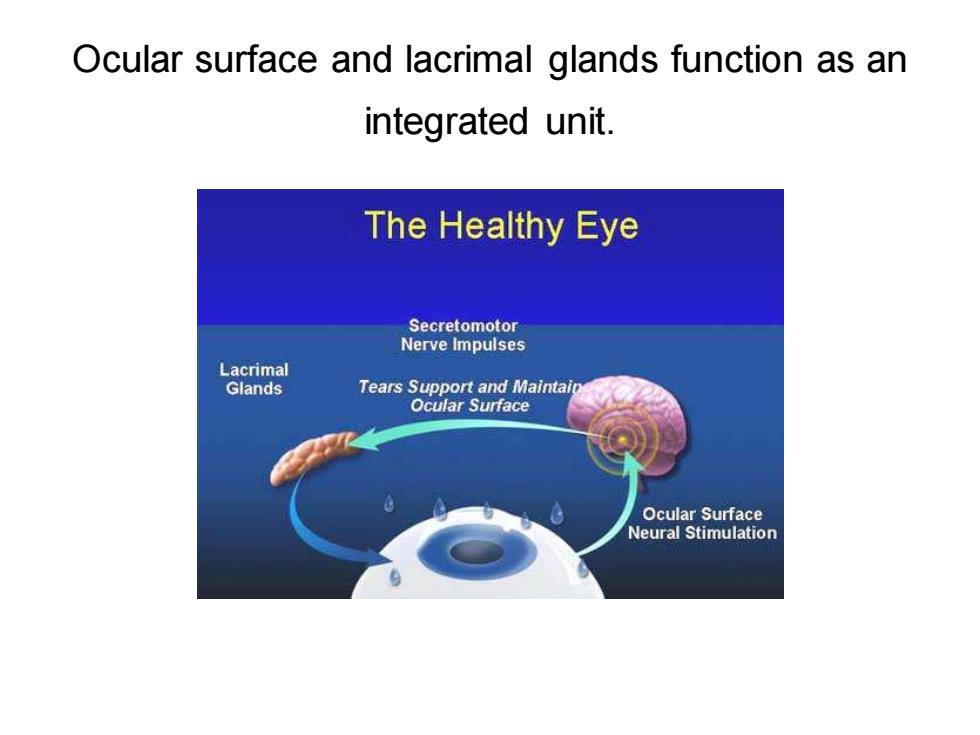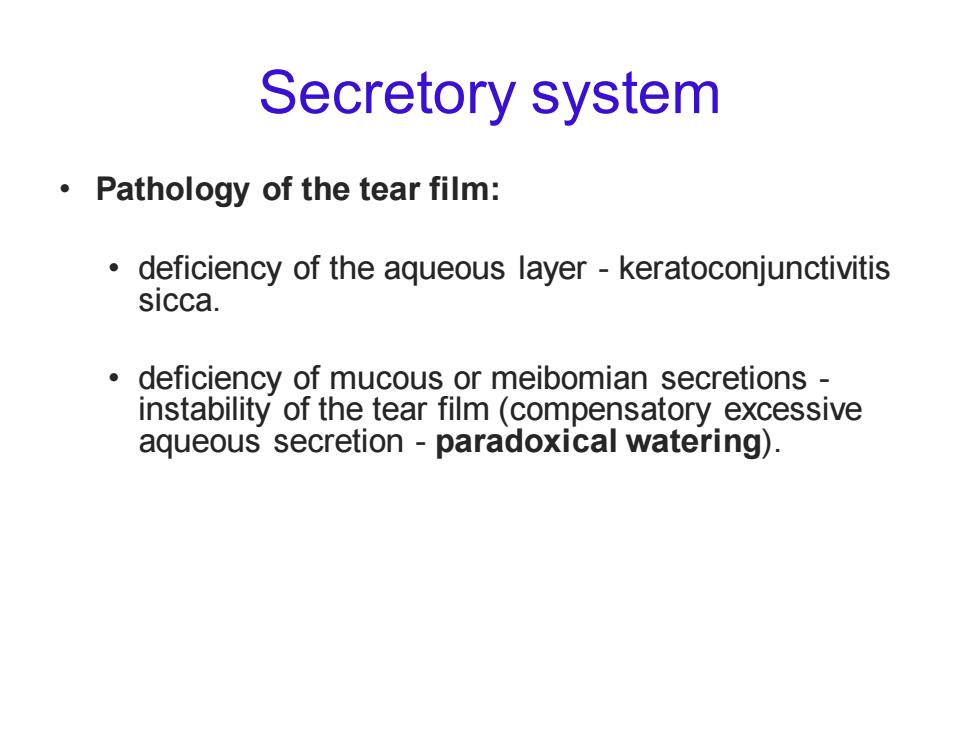
A new tear film model showing additional layers and interfaces (a six-layer model): AIR Oily layer Polar lipid monolayer Absorbed mucoid Aqueous layer Mucoid layer Glycocalyx' CORNEAL EPITHELIUM Previous reports had vastly underestimated the thickness of mucus
A new tear film model showing additional layers and interfaces (a six-layer model): Previous reports had vastly underestimated the thickness of mucus

Ocular surface and lacrimal glands function as an integrated unit. The Healthy Eye Secretomotor Nerve Impulses Lacrimal Glands Tears Support and Maintaio Ocular Surface Ocular Surface Neural Stimulation
Ocular surface and lacrimal glands function as an integrated unit

Secretory system Pathology of the tear film: deficiency of the aqueous layer -keratoconjunctivitis sicca. deficiency of mucous or meibomian secretions instability of the tear film(compensatory excessive aqueous secretion -paradoxical watering)
Secretory system • Pathology of the tear film: • deficiency of the aqueous layer - keratoconjunctivitis sicca. • deficiency of mucous or meibomian secretions - instability of the tear film (compensatory excessive aqueous secretion - paradoxical watering)

Lacrimal drainage system -anatomy Common canaliculus Punctum Canalicuus (8 mm) 8 mm -Amputls 2 mm Lacrimal sac (10 mm) 12m Middle turbinate Nasolacrimal Ampulla (2 mm duct (12 mm) Common canaloulus Valve of Hasner manmy te lcimal ecrymn byChne 2007E
Lacrimal drainage system - anatomy

The anatomy of tear production and flow Lacrimal gland Ca Lacrimal sac Middle turbinate Nasolacrimal duct Inferior turbinate
The anatomy of tear production and flow